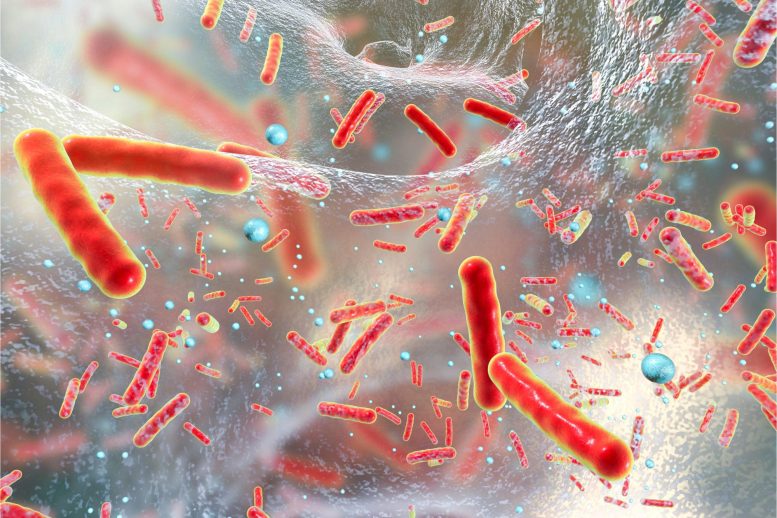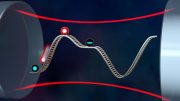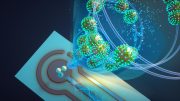
Groundbreaking research reveals how ammonia-oxidizing microorganisms coexist by preferring different nitrogen sources, significantly advancing our understanding of the global nitrogen cycle and suggesting new strategies for reducing nitrogen-related environmental pollution.
A study led by the University of Oklahoma enhances scientific understanding of ammonia oxidation.
Assistant Professor Wei Qin from the University of Oklahoma has led new research that fundamentally alters the understanding of ammonia oxidation, a key element of the global nitrogen cycle. This research was recently published in the journal Nature Microbiology.
Ammonia-oxidizing microorganisms, commonly called AOM, use ammonia for energy and account for the annual oxidation of approximately 2.3 trillion kilograms of nitrogen in soil, freshwater, the subsurface, and man-made ecosystems. One major question that has remained unanswered for decades is how different lineages of AOM species coexist in the same environment: do they compete for ammonia or instead use other alternative compounds for their energy needs?
“The different lineages of AOM are simultaneous growing in the same environment and were thought to primarily compete for ammonia,” Qin said. “Our collaborative research focused on determining why and how these metabolically conserved lineages are able to coexist without direct competition for inorganic nitrogen (ammonia), and we examined their abilities to use organic nitrogen (urea) instead.”
The Role of Urea in AOM Diversity and Coexistence
More than half of the AOM species have adapted to utilize urea, a widely available organic nitrogen compound that accounts for approximately 40 percent of all nitrogen in fertilizers, as an alternative energy source. This process, however, requires AOM to use an additional energy because urea is a more complex molecular structure and needs to first be broken down into ammonia inside the AOM cells before further utilization. Knowing this, Qin’s collaborative team sought to understand how AOM acquires and metabolizes ammonia and urea when both are available simultaneously.
“We always called urea an alternative substrate to ammonia,” Qin said. “Now, we realize that a major lineage of AOM actually prefer urea and repress the use of ammonia when urea is present. This discovery challenges dominant assumptions that had persisted for more than 100 years since the cultivation of the first AOM species.”
The research findings show that different AOM lineages employ different regulatory strategies for ammonia or urea utilization, thereby minimizing direct competition with one another and allowing for coexistence. These differential preferences reveal a hidden physiological biodiversity and have real-world consequences that will need to be explored further.
“The AOM produces either nitrate, which leaches into groundwater and surrounding bodies of water, causing eutrophication, or nitrous oxide, which is a powerful greenhouse gas,” Qin said. “Once we confirm which AOM lineages prefer urea, we could investigate their contribution to nitrate leaching and greenhouse gas production in the environment. This is necessary for developing sustainable and practical approaches to reducing these nitrogen pollutants in natural and engineered ecosystems. This will likely be the focus of future research.”
Reference: “Ammonia-oxidizing bacteria and archaea exhibit differential nitrogen source preferences” by Wei Qin, Stephany P. Wei, Yue Zheng, Eunkyung Choi, Xiangpeng Li, Juliet Johnston, Xianhui Wan, Britt Abrahamson, Zachary Flinkstrom, Baozhan Wang, Hanyan Li, Lei Hou, Qing Tao, Wyatt W. Chlouber, Xin Sun, Michael Wells, Long Ngo, Kristopher A. Hunt, Hidetoshi Urakawa, Xuanyu Tao, Dongyu Wang, Xiaoyuan Yan, Dazhi Wang, Chongle Pan, Peter K. Weber, Jiandong Jiang, Jizhong Zhou, Yao Zhang, David A. Stahl, Bess B. Ward, Xavier Mayali, Willm Martens-Habbena and Mari-Karoliina H. Winkler, 31 January 2024, Nature Microbiology.
DOI: 10.1038/s41564-023-01593-7









Be the first to comment on "A Fundamental Shift in Our Understanding – Scientists Unravel a Global Nitrogen Mystery"